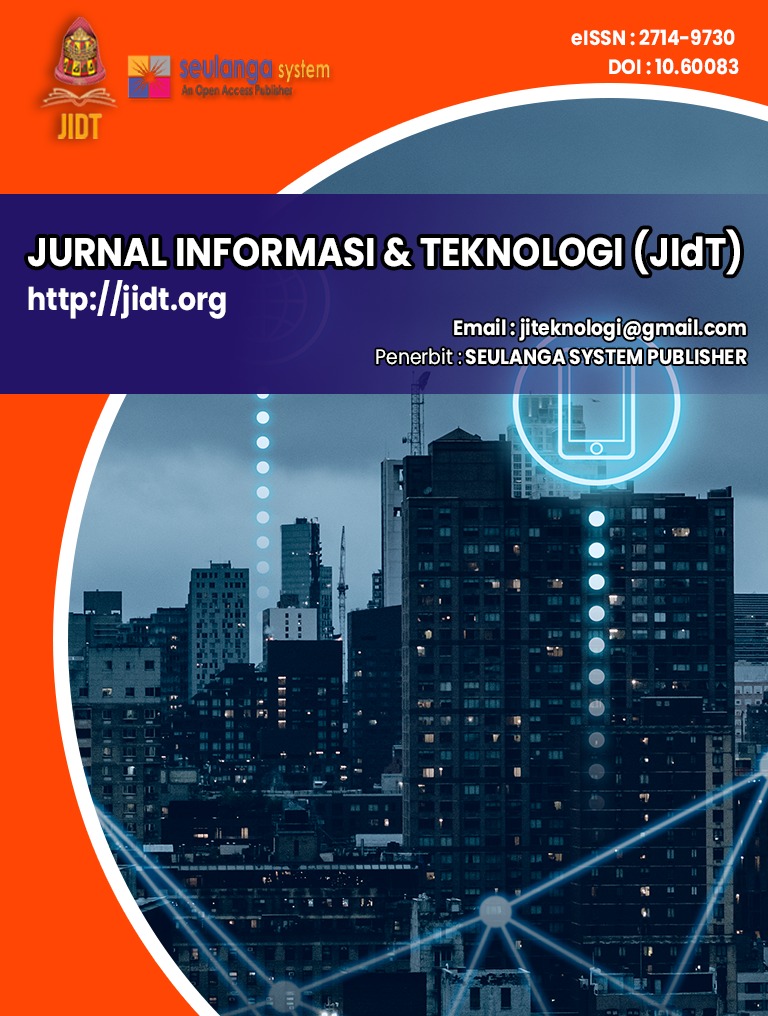Prediksi Guru Kemungkinan Tetap Bekerja di Sekolah Al Uswah Surabaya Menggunakan Machine Learning
Main Article Content
Abstract
Penelitian ini bertujuan untuk memprediksi potensi tetap bekerjanya guru di Sekolah Al Uswah Surabaya, sehingga dapat meminimalisir tingkat turnover. Peneliti telah menggunakan algoritma klasifikasi untuk mengetahui algoritma yang paling cocok dalam memprediksi turnover guru dan diproses dengan aplikasi orange data mining. Berdasarkan tabel hasil prediksi maupun confusion matrix, menghasilkan rekomendasi bahwa algoritma yang paling bagus performanya adalah Logistic Regression. Tingkat Presicion untuk perbandingan data training dan testing 80:20 mencapai 80,8%, lebih tinggi dibanding tiga algoritma lainnya yang di bawah 80%. Melalui penelitian ini dapat memperjelas bahwa untuk studi kasus prediksi turnover karyawan, dapat menggunakan parameter Presicion. Melalui hasil penelitian dapat membantu lembaga pendidikan dalam merekrut guru yang memiliki peluang bisa bertahan lebih lama dengan memanfaatkan beberapa atribut standar dari biodatanya.
Article Details

This work is licensed under a Creative Commons Attribution 4.0 International License.
References
[2] Mirza Mohtashim Alam , Karishma Mohiuddin: A Machine Learning Approach to Analyze and Reduce Features to a Significant Number for Employee’s Turn Over Prediction Model, 143 (2019)
[3] Ahmed Hosny Ghazi, Samir Ismail Elsayed, Ayman Elsayed Khedr, A Proposed Model for Predicting Employee Turnover of Information Technology Specialists Using Data Mining Techniques, 2021, pp. 114.
[4] Y. Helmy, A. E. Khedr, S. Kolief, E. Haggag, “An Enhanced Business Intelligence Approach for Increasing Customer Satisfaction Using Mining Techniques”, International Journal of Computer Science and Information Security, Vol. 17, No. 4, 2019, pp. 159-176.
[5] S. Kodati and R. Vivekanandam, “Analysis of Heart Disease using in Data Mining Tools Orange and Weka Sri Satya Sai University Analysis of Heart Disease using in Data Mining Tools Orange and Weka,” Glob. J. Comput. Sci. Technol., vol. 18, no. 1, 2018.
[6] K. Singh Rawat and C. Author, “Comparative Analysis of Data Mining techniques, Tools and Machine Learning Algorithms for Efficient Data Analytics,” vol. 19, no. 4, pp. 56–61, 2017, doi: 10.9790/0661-1904035661.
[7] Fajar Sodik Pamungkas, Bayu Dwi Prasetya, Iqbal Kharisudin; 2020; Perbandingan Metode Klasifikasi Supervised Learning pada Data Bank Customers Menggunakan Python; https://journal.unnes.ac.id/sju/index.php/prisma/ ISSN 2613-9189.
[8] E. Khedr, A. M. Idrees, “Adapting Load Balancing Techniques for Improving the Performance of e-Learning Educational Process”, Journal of Computers, Vol. 12, No. 3, 2017, pp. 250-257.
[9] M. Reza Afrash , Mohsen Shafee, and Hadi Kazemi Arpanahi, Establishing machine learning models to predict the early risk of gastric cancer based on lifestyle factors, 2023 pp. 1.
[10] K. K. Tsiptsis, A. Chorianopoulos, ‘’Data mining techniques in CRM: inside customer segmentation’’, John Wiley & Sons, 2011
[11] Al Mamun, M. N. Hasan, “Factors affecting employee turnover and sound retention strategies in business organization: a conceptual view”, Problems and Perspectives in Management, Vol. 15, No. 1, 2017, pp. 63-71.
[12] R. Mendes, J. P. Vilela, “Privacy-preserving data mining: methods, metrics, and applications,” IEEE Access, Vol. 5, 2017, pp. 10562-10582
[13] Nasril, F., Indiyati, D., & Ramantoko, G. (2021). Talent Performance Analysis Using People Analytics Approach. Budapest International Research and Critics Institute (BIRCI-Journal): Humanities and Social Sciences, 4(1), 216–230. https://doi.org/10.33258/birci.v4i1.1585
[14] Mishra, S. N., & Lama, D. R. (2016). A Decision Making Model for Human Resource Management in Organizations using Data Mining and Predictive Analytics. International Journal of Computer Science and Information Security (IJCSIS), 14(5), 217–221.
[15] Setianto, K. S., & Jatikusumo, D. (2020). Employee Turnover Analysis Using Comparison of Decision Tree and Naïve Bayes Prediction Algorithms on K-Means Clustering Algorithms at PT. AT. Jurnal Mantik, 4(3), 1573-1581.
[16] P. S. Devi, B. Umadevi, “A Novel Approach to Control the Employee’s Attrition Rate of an Organization”, International Journal of Computer Science and Mobile Applications, Vol. 6, No. 7, 2018, pp.43-52.
[17] O. Koyejo, N. Natarajan, P. Ravikumar, and I. S. Dhillon, ‘‘Consistent multilabel classification,’’ in Proc. 28th Int. Conf. Neural Inf. Process. Syst., 2015, pp. 3321–3329.
[18] M.-L. Zhang and Z.-H. Zhou, ‘‘A review on multi-label learning algorithms,’’ IEEE Trans. Knowl. Data Eng., vol. 26, no. 8, pp. 1819–1837, Jun. 2014.
[19] W. Waegeman, K. Dembczynski, A. Jachnik, W. Cheng, and E. Hüllermeier, ‘‘On the Bayes-optimality of f-measure maximizers,’’ J. Mach. Learn. Res., vol. 15, pp. 3513–3568, 2014.
[20] Moh. Reza Heydarian, Thomas E. Doyle, and Reza Samavi, “MLCM: Multi-Label Confusion Matrix,” IEEE Access, 2022, pp. 19083.
[21] Amalia Vanacore, Maria Sole Pellegrino, Armando Ciardiello; Fair evaluation of classifier predictive performance based on binary confusion matrix; 2022; Computational Statisticshttps://doi.org/10.1007/s00180-022-01301-9
[22] Q. A. Al-Radaideh, E. Al Nagi, “Using data mining techniques to build a classification model for predicting employee’s performance”, International Journal of Advanced Computer Science and Applications, Vol. 3, No. 2, 2015, pp. 144-15
[23] Ajit, P.: Prediction of employee turnover in organizations using machine learning algorithms. Algorithms 4(5), C5 (2016)
